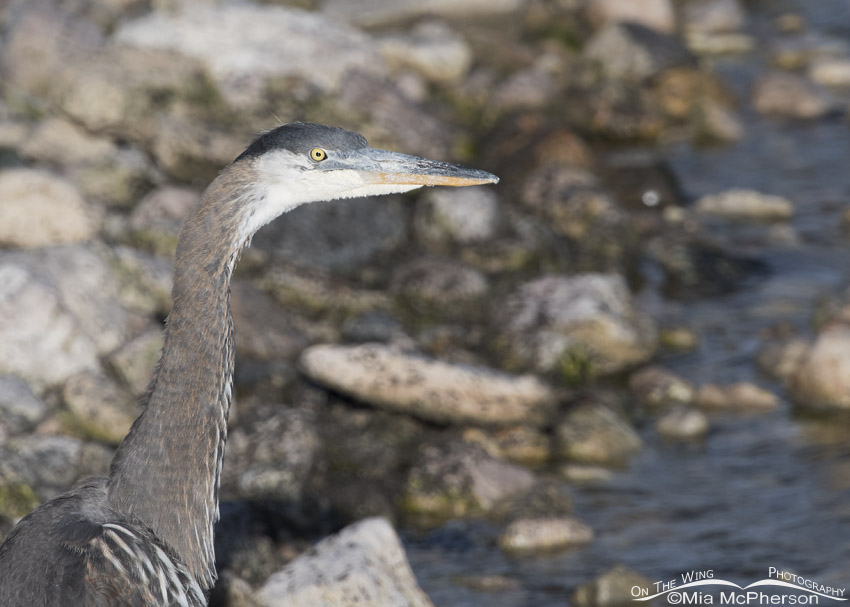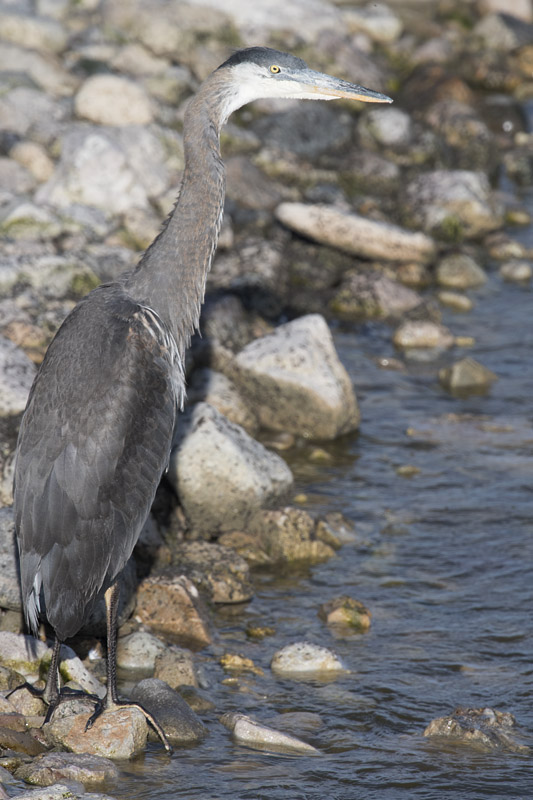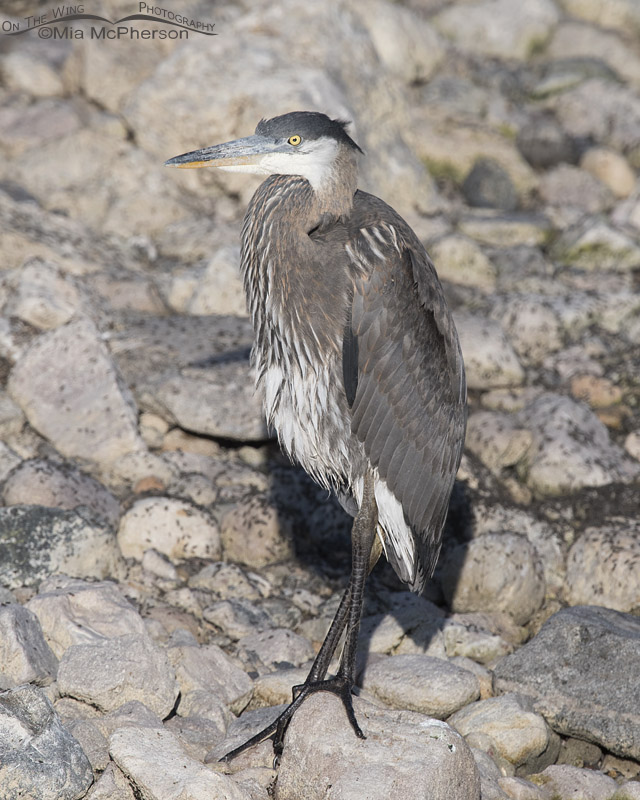 Immature Great Blue Heron on the shore of the Great Salt Lake – Nikon D500, f7.1, 1/2500, ISO 500, Nikkor 500mm VR with 1.4x TC, natural light
Immature Great Blue Heron on the shore of the Great Salt Lake – Nikon D500, f7.1, 1/2500, ISO 500, Nikkor 500mm VR with 1.4x TC, natural light
The Great Salt Lake is hypersaline and only brine flies, brine shrimp and some algae can live in such saline conditions but the lake and its surrounding marshes provide critical habitat for millions of migrating shorebirds and waterfowl.
Near Antelope Island State Park there are two smaller islands, White Rock and Egg Island, that are closed to access all year round because some species of birds nest there including California Gulls, Double-crested Cormorants and Great Blue Herons.
 Immature Great Blue Heron at the Great Salt Lake – Nikon D500, f7.1, 1/1600, ISO 500, Nikkor 500mm VR with 1.4x TC, natural light
Immature Great Blue Heron at the Great Salt Lake – Nikon D500, f7.1, 1/1600, ISO 500, Nikkor 500mm VR with 1.4x TC, natural light
The Great Salt Lake is too saline for fish to survive in so the adult herons, gulls and cormorants that nest on these two small islands have to fly long distances to catch prey to bring back to their young. Some fish do get into the lake from the rivers that feed the lake but they don’t survive for long in the high salinity. The islands offer no shade, no freshwater and nests are very close together from what I can see through my lens so one has to wonder why the adults decide to nest on these desert islands. It could be protection from land predators but with the lower lakes levels there are often land bridges to these islands during the middle of summer.
 Resting immature Great Blue Heron – Nikon D500, f7.1, 1/2000, ISO 500, Nikkor 500mm VR with 1.4x TC, natural light
Resting immature Great Blue Heron – Nikon D500, f7.1, 1/2000, ISO 500, Nikkor 500mm VR with 1.4x TC, natural light
After nesting season is completed the cormorants seem to disperse quickly to freshwater areas where they can find plentiful fish. The California Gulls hang around the lake because they consume brine flies on the lake and lake shore.
It does seem odd though to see Great Blue Herons hanging around the Great Salt Lake after the chicks have fledged like this immature heron I photographed yesterday near the causeway. I suppose the young herons could be looking for other prey along the lake shore or on the island itself like voles or injured migrating shorebirds near the water but it seems to me they could leave and fly to the freshwater marshes at Farmington Bay WMA, Ogden Bay WMA, Bear River Migratory Bird Refuge, Great Salt Lake Shorelands Preserve or anywhere along the shoreline of the lake that has better and easier opportunities for capturing prey.
I don’t know why some of the young Great Blue Herons hang around Antelope Island State Park after they have fledged but as a bird photographer I am glad they do.
Life is good.
Mia
Click here to see more of my Great Blue Heron photos plus facts and information about this species.


Just beautiful.
So very beautiful.
Thank you.
I LOVE IT!!! There dan never be too many images of these great blues or egrets…love the setting, too…wonderful rocks, another favorite…
Beautiful images Mia! Thank you!
In truth, I’ve wondered why humans settled there, too. That’s never made a lick of sense to me in terms of human survival, but evidently, there’s something there that inspires survival. Who knew?
Beautiful photos. Would the parents have left & this young Great Blue Heron doesn’t know to go to fresh water?
Mia,
By now you should know that youth are unpredictable! :=)